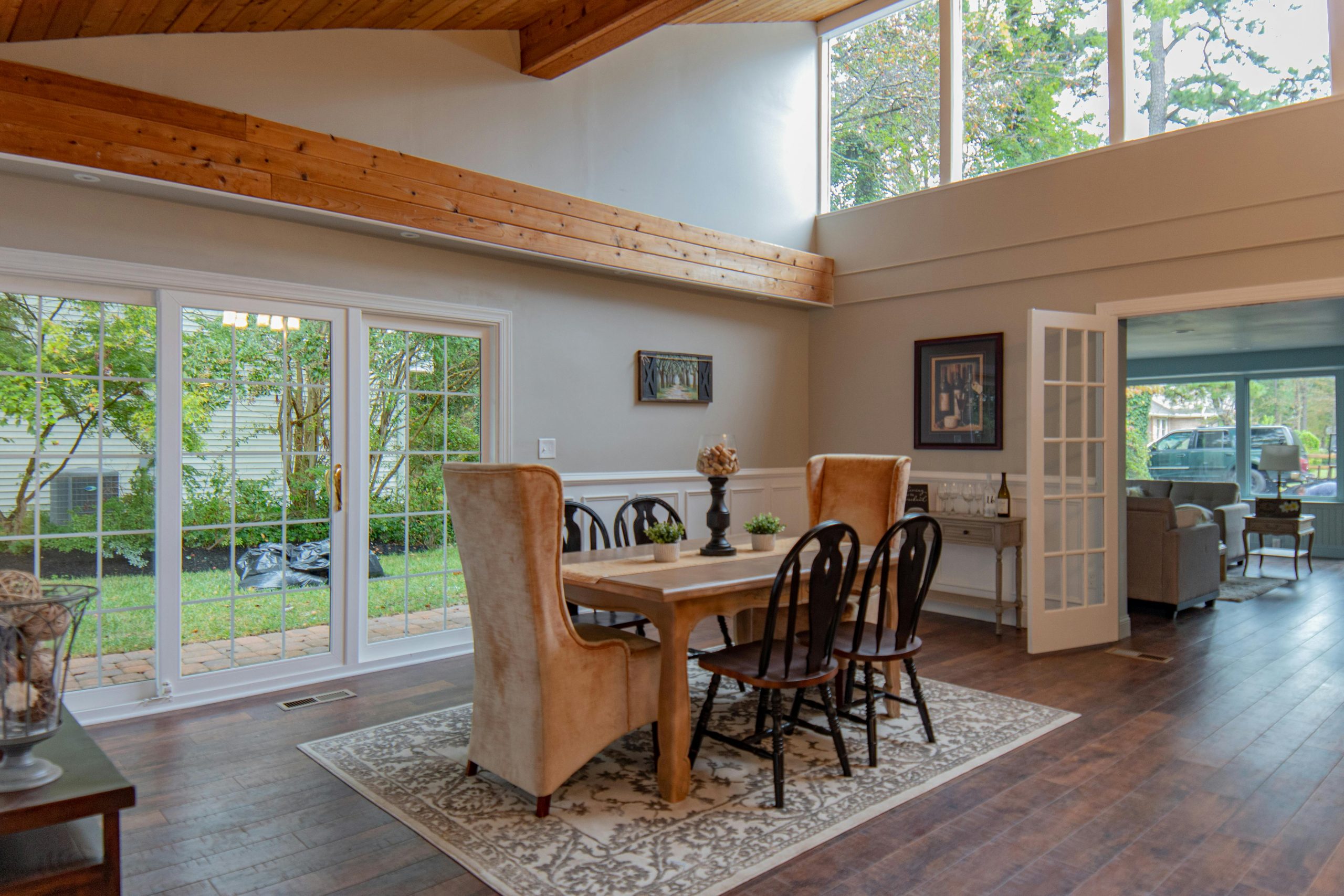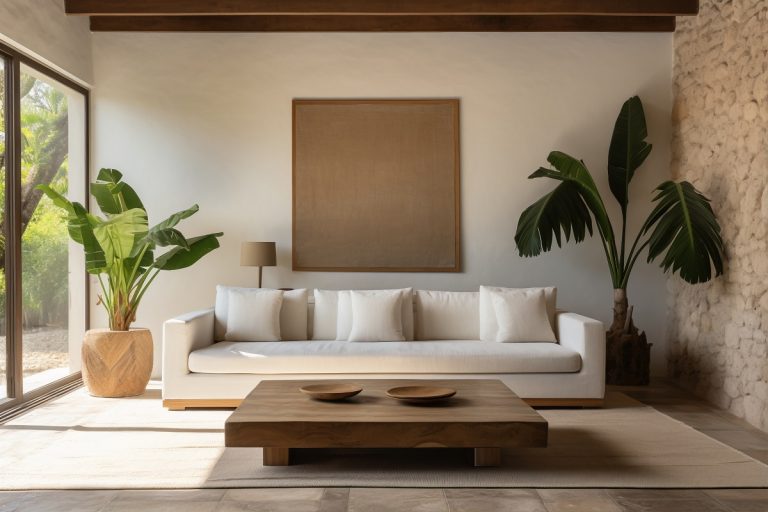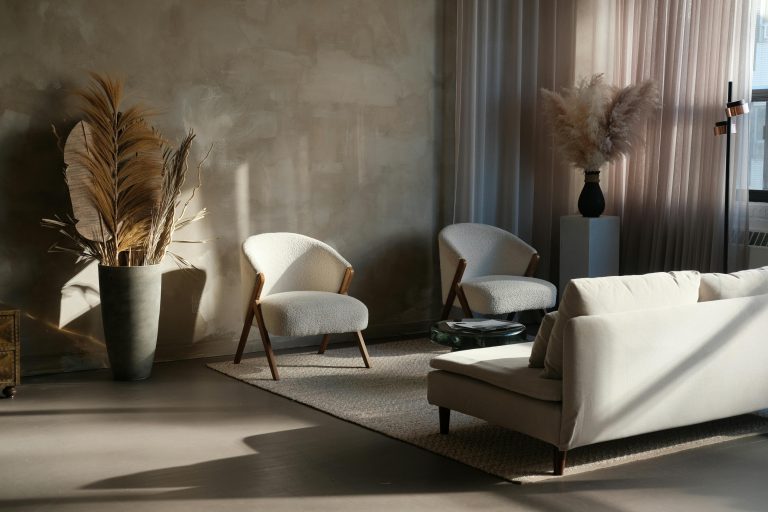

Tudor homes are known for their historic charm—arched doorways, exposed beams, leaded glass windows, and steep-pitched gables. But what happens when you’re a style-conscious homeowner who loves the timeless architecture and modern design? You don’t have to choose one or the other. In fact, modern interiors can complement a Tudor house beautifully—when done right. Here’s how home design professionals make it work beautifully.
Why Blend Modern and Tudor Styles?
Modern interiors are typically minimal, airy, and sleek—on the surface, that may seem like the opposite of a Tudor home’s cozy, storybook aesthetic. But interior designers argue the contrast is exactly what makes the combination work.
Blending styles allows you to:
- Preserve historical character while making spaces feel updated
- Add functional comfort without a full remodel
- Create a unique design statement that’s not cookie-cutter
- Highlight the beauty of original features by setting them against clean, modern lines
The key is balance. It’s not about erasing history—it’s about giving it new life.
1. Which Original Tudor Features Should You Keep?

Not every element needs to be updated. Most home design pros agree: preserving key architectural details gives your modern furnishings something to contrast against.
Keep these Tudor features intact if possible:
- Wood beams and paneling – Sand and refinish dark wood to remove any dated stain or shine, but don’t cover them up.
- Stone or brick fireplaces – Let these be your room’s statement piece. Pair with minimal modern accents to avoid visual competition.
- Leaded or stained-glass windows – Frame them with simple window treatments or leave them bare to highlight their craftsmanship.
- Arched doorways or niches – Don’t square them off. Let the curves soften the lines of modern furniture.
Pro tip: If an element feels too heavy or dark, look at softening rather than removing it—lighter finishes, fresh paint, or strategic lighting can make a big difference.
2. How Can You Modernize Without Gutting the Charm?
You can bring a Tudor interior into the present without losing its identity. Try these subtle but effective upgrades:
Swap Out Hardware and Fixtures
You don’t need to rip out cabinets or built-ins. Instead, replace knobs and pulls with streamlined finishes like matte black, brushed brass, or minimalist chrome. The same goes for light switch plates, faucets, and door handles.
Use Neutral Paint Colors Strategically
Instead of dark, saturated colors on every wall, break it up. Use warm neutrals like greige, off-white, or muted sage to brighten up rooms while still working with the Tudor palette. Paint ceilings and trim in light tones to lift the space.
Choose Updated Lighting
Replace heavy or ornate chandeliers with modern pendant lights, globe fixtures, or clean-lined sconces. This quick change can instantly bring the room into the 21st century—without touching the architecture.
3. What Type of Modern Furniture Works Best in a Tudor House?
If the structure of a Tudor style home is detailed and textured, the furniture should balance that with clean lines and lighter silhouettes. Here’s what designers recommend:
- Low-profile sofas with neutral upholstery (linen, boucle, or soft velvet)
- Mid-century modern chairs to contrast with wood beams or plaster walls
- Natural wood pieces in oak, walnut, or ash to echo original materials without being overly rustic
- Glass or metal coffee tables to keep the visual footprint light
- Simple shelving or built-ins in matte finishes
Avoid overly ornate or bulky furniture that competes with architectural features. Let the house’s character take the lead.
4. Can You Use Color and Pattern in a Modern Tudor House Interior?
Absolutely—but sparingly. Tudor interiors already have visual weight. Instead of adding busy wallpaper or multiple bold colors, go for intentional accents.
Smart ways to use color and pattern:
- A statement rug in a bold geometric or tribal print
- One accent wall in a deep, moody tone like forest green or navy
- Throw pillows or curtains with modern block prints or stripes
- Art in vibrant or unexpected palettes
Keep the rest of the palette quiet so these choices can shine.
5. What About Flooring and Rugs?

Most Tudor homes feature original hardwood floors—don’t rip them out. Refinish them if needed, or layer area rugs to define modern furniture groupings.
Try:
- Neutral wool or jute rugs for a minimalist look
- Oversized rugs to ground furniture in larger Tudor living rooms
- Geometric or modern Persian patterns in dining areas
- Low-pile options for high-traffic zones
Avoid overly traditional or floral rugs that might clash with clean-lined furniture.
6. How Do You Decorate Tudor Walls in a Modern Way?
With all that old-world texture, Tudor walls don’t need much. But a few modern touches can update the feel without overwhelming the bones of the home.
Home design professionals suggest:
- Large-scale modern art with simple frames
- Frameless mirrors to reflect light and expand rooms
- Sconces or picture lights to highlight original architectural details
- Minimalist gallery walls with consistent frames in black, white, or brass
Avoid cluttering the space—less is more when you already have intricate woodwork or paneling.
7. How Can You Blend Kitchens and Bathrooms?
These rooms usually get the biggest upgrades in Tudor homes. But modern updates don’t have to feel jarring if you reference the past.
In Kitchens:
- Use flat-front cabinets in muted tones or wood finishes
- Choose stone countertops like soapstone or honed marble
- Add modern lighting like linear pendants or recessed LEDs
- Mix in warm metals (like brass or copper) to echo old-world charm
In Bathrooms:
- Go for frameless glass showers paired with subway or zellige tiles
- Choose vessel sinks or sleek floating vanities
- Accent with arched mirrors or vintage-look sconces
- Keep colors muted and timeless
Keep tile shapes and materials classic, even if layouts and fixtures are modern.
8. What Should You Avoid When Blending Styles?
While there’s no single “wrong” approach, home design pros warn against a few common mistakes:
- Too much contrast – All-black modern pieces against all-dark Tudor wood can make a space feel gloomy. Soften the contrast with lighter accents.
- Theme decorating – Avoid medieval or “storybook” motifs. Let the architecture speak for itself without leaning into cliché.
- Over-decorating – Don’t fill every niche or ledge. Tudor interiors already have visual interest; let them breathe.
- Mismatched scale – Avoid tiny modern pieces that look dwarfed next to oversized Tudor beams or hearths.
In a Nutshell
Merging modern decor with a Tudor house interior doesn’t mean following a rigid formula. The goal is to respect the character of the home while making it livable, light, and uniquely yours.
So don’t be afraid to mix styles, play with contrast, and choose pieces that reflect your personal taste. When done thoughtfully, the combination of old and new doesn’t just work—it shines.





